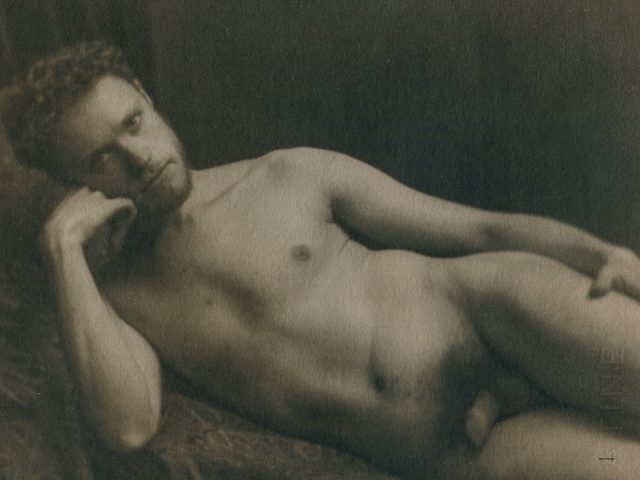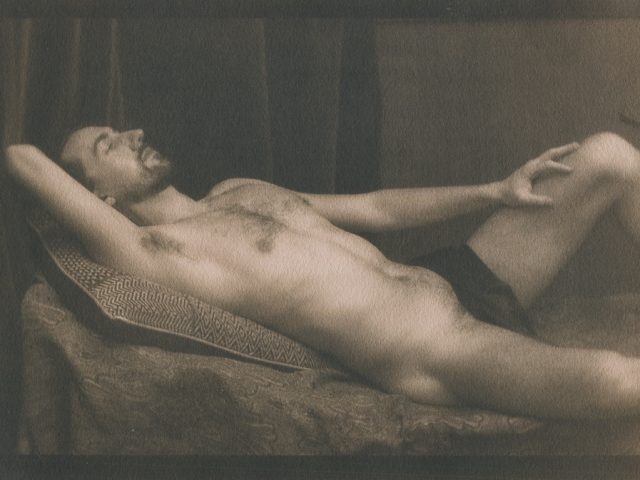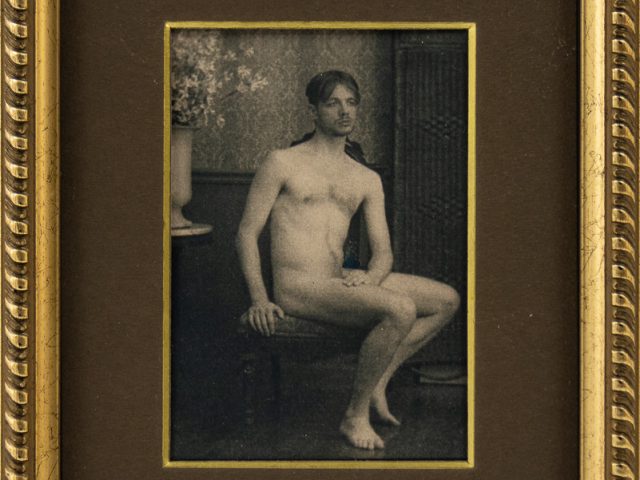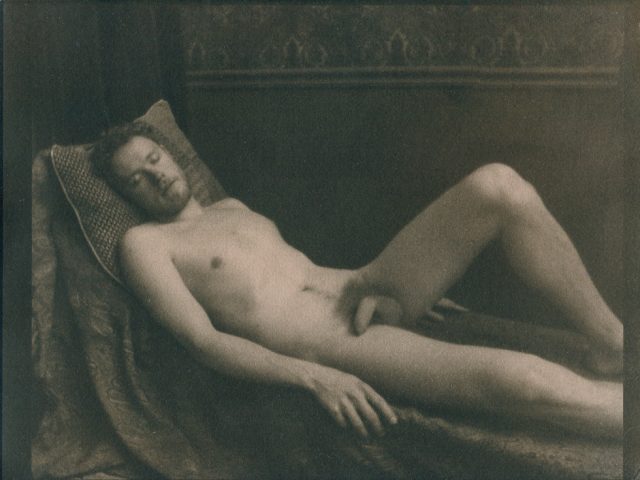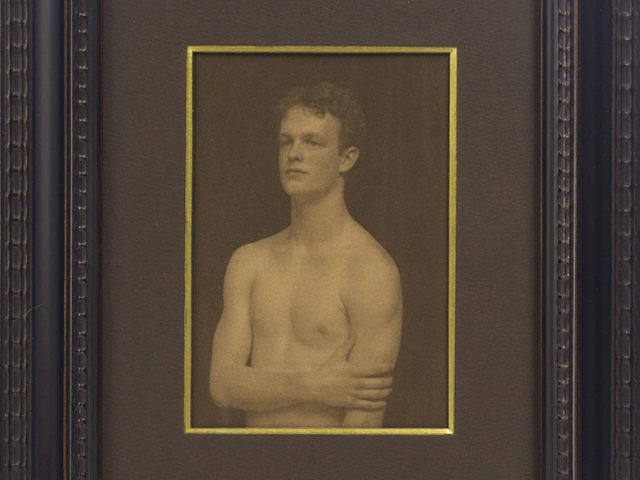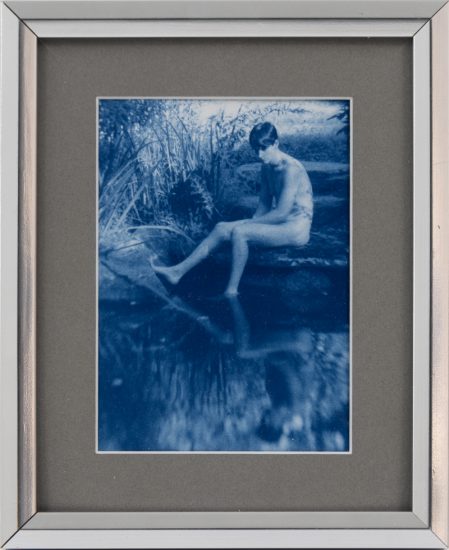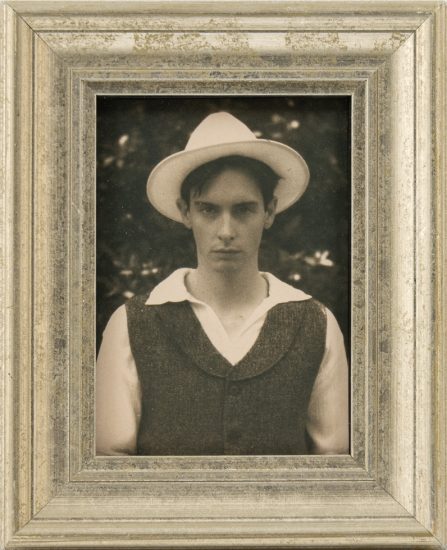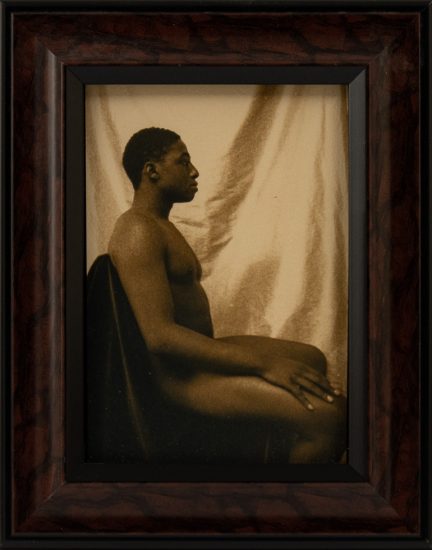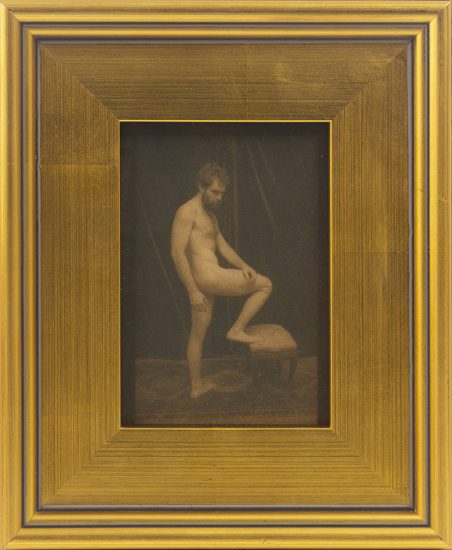“Wretched social laws—a result of neither health measures nor any logical judgment—have diminished my work. They have hindered my means of expression; they have prevented me from bringing enlightenment and emotion to those who are made like me.” —C.P. Cavafy, 1905
Artist Curtice Taylor writes: “These lines could have been penned by Walt Whitman, Henry James, Thomas Eakins, F. Holland Day, or even me (less the eloquence) back in the 1970s. I have always been drawn to much of the same imagery as male Victorian writers and artists. They referenced the ancients in their work in order to root their homoerotic art into an historical context that made it palatable to the prudish tastes of the time. Today, I have the modern luxury of simply liking Greco Roman statues and the later Renaissance versions as well.”
“One thing would make me happier than I have been for years upon years: to be with you altogether—that is—without stopping. Could not we do that “for a bit”. . . I want to LIVE with you—even though I know it can not be for long—really Live with you for once.” —From a letter to Duncan Grant from a lover
Taylor continues: “Fellow queer artists like John Dugdale and McDermott & McGough and ClampArt’s own Mark Beard have also been drawn to the aesthetics of the Victorian/Edwardian period. It seems, in fact, the majority of artistic influences on me have been backward looking.”
“The delight and the torture of finer nerves—an inability to use coarse and strong phrases, and a shrinking from all display of rude manners—were peculiarities which he could not overcome, and must endeavor to conceal. There were men of sturdy intelligence in the community; but none of refined culture, through whom he might have measured and understood himself; and the very qualities, therefore, which should have been his pride, gave him only a sense of shame. . .” —Joseph and His Friend by Bayard Taylor
“My grandmother’s house was filled with Victorian furniture all overlooked by a huge mirror dripping with carved grapevines. My mentor in photography, Gail Russell, lived in a mock Tudor house—the walls hung with images created by the Pre-Raphealites. She also taught me the lost art of toning and hand-painting photographs. I was drawn then as now to the tactile aspects of these ‘alternative’ photo processes.
“For 30 years, most of my editorial images focused on gardens in the United States and Europe. I felt at home in those places where the aesthetics of the past were very much on display. Five years ago, I lucked into a studio built in the early 1900s on Union Square complete with a north-facing skylight. The glow of that space compelled me to explore natural light portraiture. As I began shooting I imagined that the first artist to occupy the space was a photographer.”
He giveth sleep to His belovèd,
Sweetest of all things, sleep;
But I am not of His belovèd,
Therefore I cannot sleep.
He giveth tears to His belovèd,
And His belovèd weep;
But I am not of His belovèd,
Therefore I cannot weep.
—Staneslaus Stenbock
“I see my artist behind his 8 x 10, wood and brass camera instructing a model to stand nearer to the draped curtain and to not look at the camera. In more detail I imagine him as the third son of a well to do and perhaps aristocratic English family, who not being in line for a major inheritance or title, came to America where the English were held in high regard, and most importantly, prosecution for his proclivities was less severe. He was well educated, and like many men of his class, intrigued by the scientific breakthroughs of the day from Darwinism to archeology. He had tried his hand at painting but realized that while he could depict with accuracy models and landscapes, these endeavors lacked artistry. Photography the new, very scientific process for capturing reality, intrigued him. Upon arriving in New York he joined one of the many flourishing camera clubs and soon found a studio overlooking Union Square just a short stroll from his townhouse in the very fashionable area between the studio and Madison Square Park.”
[H]ere to put your lips upon mine I permit you,
With the comrade’s long-dwelling kiss or the new husband’s kiss,
For I am the new husband and I am the comrade. . .
—Walt Whitman
“I imagine he was also well traveled, visiting and photographing Roman ruins and papal gardens. When home in England he photographed English gardens and landscapes and the odd portrait. It was these images that he was known for and many were sold in a few well-placed galleries.
“It was in New York though that he photographed male models which make up the bulk, though not all, of his ‘found portfolio.’ I have augmented these images with written artifacts of the era to reflect the frustrations, anxieties, and longings of gay men who lived in those painful times. While my work is imbued with nostalgic thoughts and aesthetics, it also recalls past desires and longing for the glow of youthful skin illuminated by natural light.”
“You are dazzling, my dear Fullerton; you are beautiful; you are more than tactful, you are tenderly, magically tactile.” —Henry James letter


